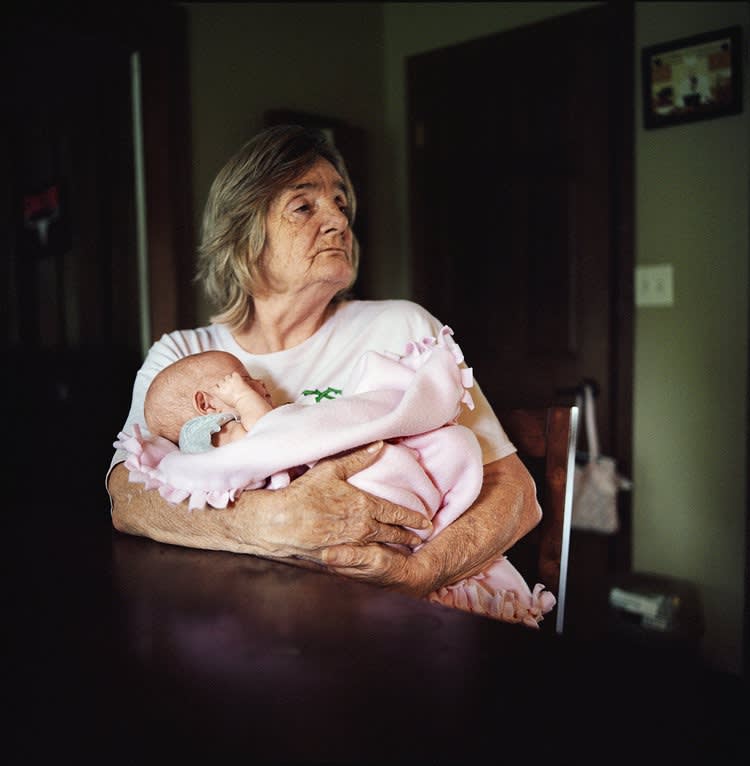Smalltown despair and delight mark Chris Verene’s “Home Movies”
For more than three decades, photographer Chris Verene has traveled to the small Illinois town of Galesburg where three generations of his family have lived. Though he and his family left long ago, first for Atlanta, where Verene grew up and then for New York City, where he continued to build his art career, Galesburg was a constant. He's documented the town's small, towheaded children growing up, captured marriages made and dissolved, and the twin ravages of drugs and poverty that ruin lives. In some ways, Galesburg is his counter-narrative: what might have been if he and his family had never left.
His photographs, of an exhausted-looking grandmother cradling a baby in “Travis’s Grandma Kathy” and a wedding feast in a small-town, wood-paneled social hall in “Heidi’s Wedding” are now supplemented with a 20-minute video that builds significantly on his legacy. In one of the most striking moments from that video, a little girl with ice blue eyes, Cheyenne, is shown in still images wrapped in a towel after a backyard summer soaking or hugging herself post-nightmare. Now, she’s asking Verene to photograph her in her high school graduation garb. It’s a statement of self-assertion on one level; rather than being photographed she’s commissioning her own image. But it’s also a revelation of what Verene’s presence has meant in this community and how he has functioned as the official documentarian of this town and this sprawling family.
And while Verene’s previous images can at times feel painfully invasive, documenting people in their worst moments, this vignette highlights how photography can also be a way to feel acknowledged and to count for something in a life where circumstances try to render you invisible. The closing of a Maytag factory in Galesburg referenced in the video is just one toppled domino in the town’s unraveling history. That economic downturn could be personified by one person, Amber, shown spending a significant chunk of her day in the fruitless pursuit of a winning lottery ticket. As the minutes tick by, Amber attempts to turn a $100 windfall into a bigger one with more trips to the store, and more tickets. You watch the money run out of her grip like a fistful of water. Yes, it’s awful. But it’s also consummately American, the kind of delusional hopefulness that one’s life will turn a corner at any minute. I shop, therefore I am.
Printed on a white matte-like oversized Polaroids, Verene’s still images continue to have the graphic punch of flashcards and operate between the twin poles of misery and delight. Grownups most often shoulder the misery burden. But Verene remains attuned to childhood as a state of exquisite grace seen in a charming photograph “Nico and Mercedes.” Two children play on a barren downtown street dressed in Spiderman costumes, in an image reminiscent of street photography by Ruth Orkin or Elliott Erwitt. In the effervescent “Jayden and Mercedes” a child holds up a blanket like an impromptu photo studio backdrop while another poses in full cheesecake mode in front, as if mimicking what they’ve seen of adult photographic conventions.
But not all of the photographs are as ebullient. In “At Amber’s Cousin’s” it is almost impossible not to prophesize and project in this image of a pretty girl with a pierced navel and Playboy bunny logo on her stomach displaying her pulchritude for the teenage boy on whose lap she reclines. The interplay between them is transparent, like Japanese Kabuki theater; her display and his lip-smacking sexual delight and twirling of his skimpy, half-grown mustache. You don’t want to doom this couple to the mistakes of their forebears, but you only have to follow along with Verene’s Galesburg stories, of drugs and teenage pregnancy and foster care and poverty to imagine the outcome of these early moments.

